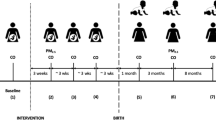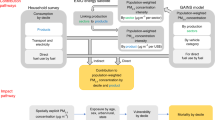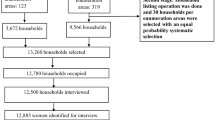Abstract
Smoke from biomass fuels is a risk factor for pneumonia, the leading cause of child death worldwide. Although particulate matter (PM) is the metric of choice for studying the health effects of biomass smoke, measuring children's PM exposure is difficult. Carbon monoxide (CO), which is easier to measure, can be used as a proxy for PM exposure. We measured the exposure of children ≤5 years of age in The Gambia to CO using small, passive, color stain diffusion tubes. We conducted multiple CO measurements on a subset of children to measure day-to-day exposure variability. Usual CO exposure was modeled using a mixed effects model, which also included individual and household level exposure predictors. Mean measured CO exposure for 1181 children (n=2263 measurements) was 1.04±1.46 p.p.m., indicating that the Gambian children in this study on average have a relatively low CO exposure. However, 25% of children had exposures of 1.3 p.p.m. or higher. CO exposure was higher during the rainy months (1.33±1.62 p.p.m.). Burning insect coils, using charcoal, and measurement done in the rainy season were associated with higher exposure. A parsimonious model with fuel, season, and other PM sources as covariates explained 39% of between-child variation in exposure and helped remove within-child variability.
This is a preview of subscription content, access via your institution
Access options
Subscribe to this journal
Receive 6 print issues and online access
$259.00 per year
only $43.17 per issue
Buy this article
- Purchase on Springer Link
- Instant access to full article PDF
Prices may be subject to local taxes which are calculated during checkout



Similar content being viewed by others
References
Armstrong J.R., and Campbell H. Indoor air pollution exposure and lower respiratory infections in young Gambian children. Int J Epidemiol 1991: 20 (2): 424–429.
Balakrishnan K., Sankar S., Parikh J., Padmavathi R., Srividya K., and Venugopal V., et al. Daily average exposures to respirable particulate matter from combustion of biomass fuels in rural households of southern India. Environ Health Perspect 2002: 110: 1069–1075.
Black R.E., Cousens S., Johnson H.L., Lawn J.E., Rudan I., and Bassani D.G., et al. Global, regional, and national causes of child mortality in 2008: a systematic analysis. Lancet 2010: 375 (9730): 1969–1987.
Brewster D., and Greenwood B. Seasonal variation of paediatric diseases in The Gambia, West Africa. Ann Trop Paediatr 1993: 13 (2): 133–146.
Bruce N., McCracken J., Albalak R., Schei M.A., Smith K.R., and Lopez V., et al. Impact of improved stoves, house construction and child location on levels of indoor air pollution exposure in young Guatemalan children. J Expo Anal Environ Epidemiol 2004: 14 (Suppl 1): S26–S33.
Dasgupta S., Huq M., Khaliquzzaman M., Pandey K., and Wheeler D. Who suffers from indoor air pollution? Health Policy Plan 2006: 21 (6): 444–458.
de Francisco A., Morris J., Hall A.J., Armstrong Schellenberg J.R.M., and Greenwood B.M. Risk factors for mortality from acute lower respiratory tract infections in young Gambian children. Int J Epidemiol 1993: 22: 1174–1182.
Dherani M., Pope D., Mascarenhas M., Smith K.R., Weber M., and Bruce N. Indoor air pollution from unprocessed solid fuel use and pneumonia risk in children aged under five years: a systematic review and meta-analysis. Bull World Health Organ 2008: 86 (5): 390–398C.
Dionisio K.L., Howie S., Fornace K.M., Chimah O., Adegbola R.A., and Ezzati M. Measuring the exposure of infants and children to indoor air pollution from biomass fuels in the Gambia. Indoor Air 2008: 18 (4): 317–327.
Ezzati M., and Kammen D.M. Indoor air pollution from biomass combustion and acute respiratory infections in Kenya. Lancet 2001: 358 (9282): 619–624.
Ezzati M., Saleh H., and Kammen D.M. The contributions of emissions and spatial microenvironments to exposure to indoor air pollution from biomass combustion in Kenya. Environ Health Perspect 2000: 108 (9): 833–839.
Filmer D., and Pritchett L.H. Estimating wealth effects without expenditure data-or tears: an application to educational enrollments in states of India. Demography 2001: 38 (1): 115–132.
Gelman A., and Hill J. Data Analysis Using Regression and Multilevel/Hierarchical Models. Cambridge University Press, New York, 2007.
Honaker J., King G., and Blackwell M. Amelia II: A Program for Missing Data. http://gking.harvard.edu/amelia. Accessed 2010.
Honaker J., and King G. What to do about missing values in time series cross-section data. Am J Pol Sci 2010: 54 (2): 561–581.
King G., Honaker J., Joseph A., and Scheve K. Analyzing incomplete political science data: an alternative algorithm for multiple imputation. Am Pol Sci Rev 2001: 95: 49–69.
Laird N.M., and Ware J.H. Random-effects models for longitudinal data. Biometrics 1982: 38 (4): 963–974.
McCracken J.P., Schwartz J., Bruce N., Mittleman M., Ryan L.M., and Smith K.R. Combining individual- and group-level exposure information: child carbon monoxide in the Guatemala Woodstove Randomized Control Trial. Epidemiology 2009: 20 (1): 127–136.
Mestl H.E.S., Aunan K., Seip H.M., Wang S., Zhao Y., and Zhang D. Urban and rural exposure to indoor air pollution from domestic biomass and coal burning across China. Sci Total Environ 2007: 377: 12–26.
Naeher L.P., Smith K.R., Leaderer B.P., Neufield L., and Mage D.T. Carbon monoxide as a tracer for assessing exposures to particulate matter in wood and gas cookstove households of highland Guatemala. Environ Sci Technol 2001: 35: 575–581.
Northcross A., Chowdhury Z., McCracken J., Canuz E., and Smith K.R. Estimating personal PM2.5 exposures using CO measurements in Guatemalan households cooking with wood fuel. J Environ Monit 2010: 12: 873–878.
O’Dempsey T.J., McArdle T.F., Morris J., Lloyd-Evans N., Baldeh I., and Laurence B.E., et al. A study of risk factors for pneumococcal disease among children in a rural area of West Africa. Int J Epidemiol 1996: 25 (4): 885–893.
Selwyn B.J. The epidemiology of acute respiratory tract infection in young children: comparison of findings from several developing countries. Rev Infect Dis 1990: 12 (Suppl 8): S870–S888.
Smith K.R., Mehta S., and Maeusezahl-Feuz M. Indoor air pollution from household solid fuel use. Comparative Quantification of Health Risks: Global and Regional Burden of Disease Attributable to Selected Major Risk Factors. World Health Organization, Geneva, 2004, 1435–1493.
Wagstaff A. Socioeconomic inequalities in child mortality: comparisons across nine developing countries. Bull World Health Organ 2000: 78: 19–29.
Xu R. Measuring explained variation in linear mixed effects models. Stat Med 2003: 22 (22): 3527–3541.
Acknowledgements
This work was supported by a grant from the National Institute of Environmental Health Sciences (1R21ES017855-01). We thank the households who participated in the study for their help and hospitality, our field workers and field supervisors for valuable assistance in data collection, the Biomedical Engineering Department at the MRC for technical assistance throughout the study, Jose Vallarino for information on methods and instruments for personal exposure measurement, and Mariel Finucane for advice on presentation of statistical results. We also thank Grant Mackenzie for operational support, Kim Mulholland, Philip Hill, Brian Greenwood, and Peter Smith for advice on case–control study design, and Nigel Bruce and Kirk Smith for advice on exposure measurement.
Author information
Authors and Affiliations
Corresponding author
Ethics declarations
Competing interests
The authors declare no conflict of interest.
Additional information
Supplementary Information accompanies the paper on the Journal of Exposure Science and Environmental Epidemiology website
Supplementary information
Rights and permissions
About this article
Cite this article
Dionisio, K., Howie, S., Dominici, F. et al. The exposure of infants and children to carbon monoxide from biomass fuels in The Gambia: a measurement and modeling study. J Expo Sci Environ Epidemiol 22, 173–181 (2012). https://doi.org/10.1038/jes.2011.47
Received:
Accepted:
Published:
Issue Date:
DOI: https://doi.org/10.1038/jes.2011.47
Keywords
This article is cited by
-
Prediction of personal exposure to PM2.5 in mother-child pairs in rural Ghana
Journal of Exposure Science & Environmental Epidemiology (2022)
-
Personal exposure to particulate matter in peri-urban India: predictors and association with ambient concentration at residence
Journal of Exposure Science & Environmental Epidemiology (2020)
-
The use of bluetooth low energy Beacon systems to estimate indirect personal exposure to household air pollution
Journal of Exposure Science & Environmental Epidemiology (2020)
-
Household fine particulate matter (PM2.5) concentrations from cooking fuels: the case in an urban setting, Wolaita Sodo, Ethiopia
Air Quality, Atmosphere & Health (2019)
-
Understanding the effect of indoor air pollution on pneumonia in children under 5 in low- and middle-income countries: a systematic review of evidence
Environmental Science and Pollution Research (2019)



